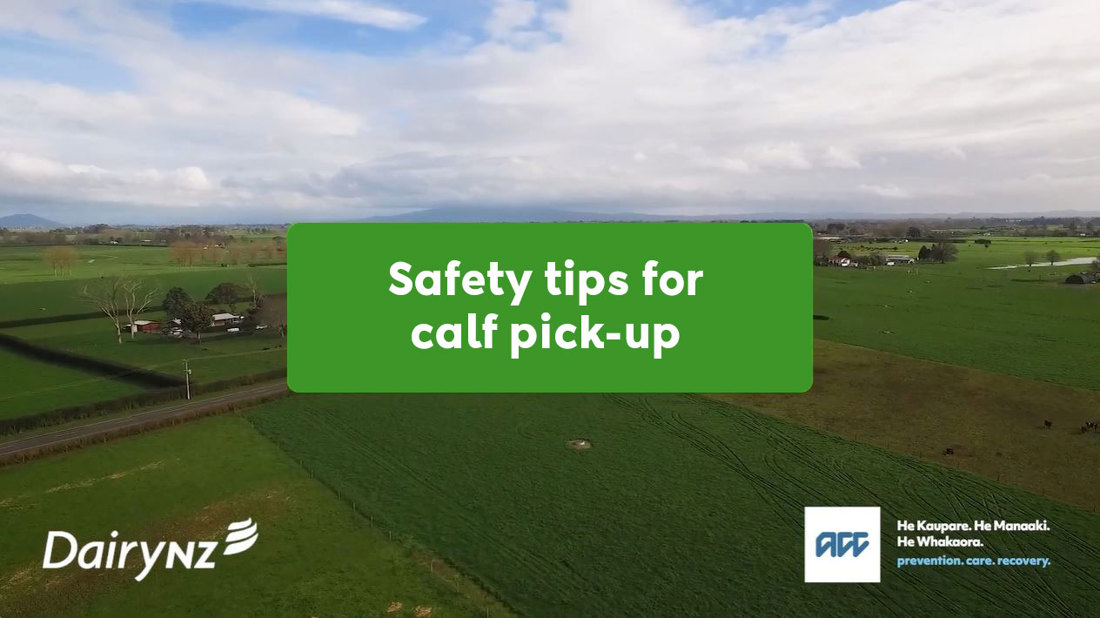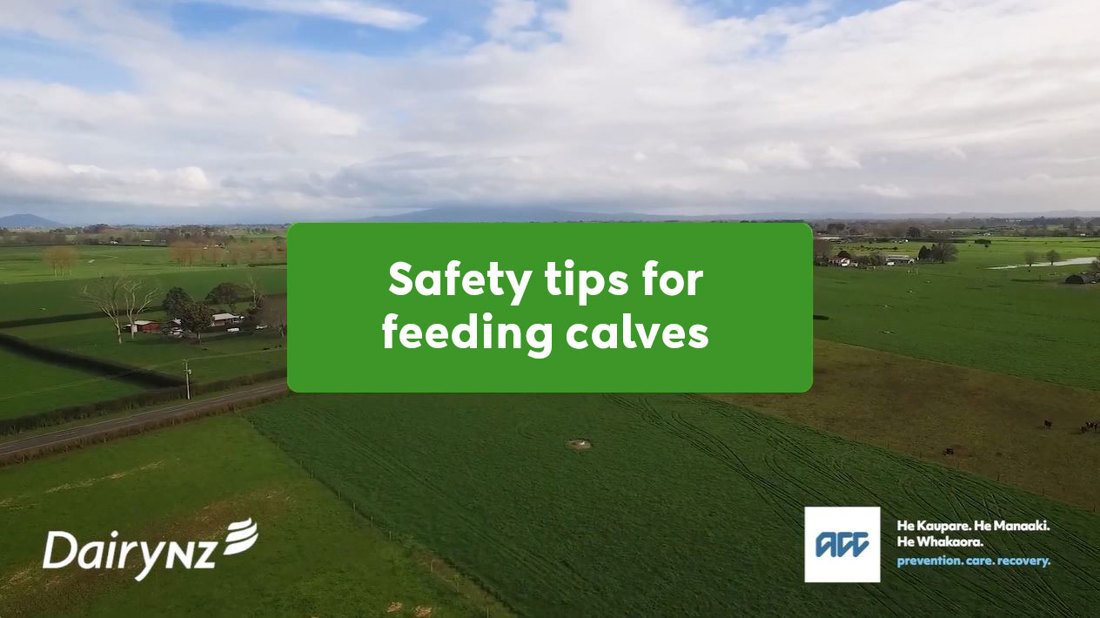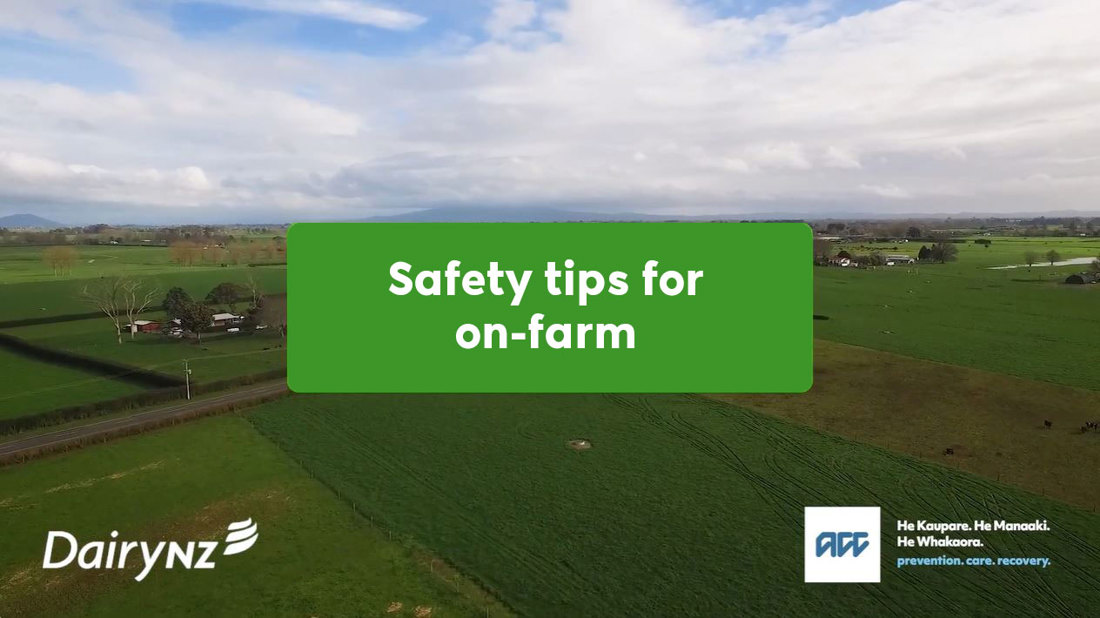Health and safety
6 min read
Your team are an asset to your business; getting them and yourself home safe from work each day is a priority for everyone.
Under the Health and Safety Work Act, employers are obliged to monitor and manage risk on-farm. This includes the impact of fatigue on employee health, safety and wellbeing.
Working on a dairy farm is high risk and health and safety demands attention. Having health and safety policies specific to your farm business will clearly outline your expectations, farm-specific risks and how these risks will be managed. It also ensures you are compliant with current workplace law.
Make health and safety a priority so that it becomes part of the workplace fabric and culture. If you view health and safety as just a legal obligation, then health and safety becomes about compliance, rather than a conscious decision to protect and look after the wellbeing of you and your team.
Mistakes can happen because of workload pressure, corner cutting, or rushing to meet time pressure. On-farm this can mean serious injury or death. As an employer it is important to create a workplace where your team feel safe and are comfortable raising health and safety concerns with you. A team that feels safe, physically and emotionally, will deliver better results, reduce risk and increase your ability to retain and attract new team members.
Farms are unique workplaces with contractors, visitors and family members often being on or around the working areas of the farm. WorkSafe provides guidance to farmers around the responsibilities they have towards the health and safety of both authorised and unauthorised visitors to the farm, and to children and young people.
Preventing on-farm injuries, even relatively minor ones, is essential to avoid lost time and productivity, especially during calving, when the days get busier. DairyNZ research in conjunction with ACC has shown that the most common injuries on farm occurred in the paddock (34%) or were calf related (24%)
To identify risks specific to your farm, work out what farm activities, equipment or features have the potential to cause harm and list these with your team. The team may notice risks that you are not aware of. Turning this list into a formal document then creates a risk register. It's a great way to involve the entire team, share responsibility, and increase team 'buy-in' by making everyone feel included in the process.
You don’t need to spend time identifying and analysing every possible risk on-farm. You should focus on risks that could result in injury or ill-health.
Remember, not all risks are obvious. Loud machinery can cause hearing loss with prolonged exposure. Handling animals can result in illness like Leptosporosis. Continued long hours without rostered time off can cause fatigue.
Managing risks on-farm is the responsibility of the whole team. You are required to do what is reasonably practicable to manage risks in your business. This is about taking responsibility for what you can control. Overall, it means that you must do what’s reasonably possible to minimise harm, considering the likelihood and severity of harm, what people should reasonably know , and the availability, suitability, and cost of risk reduction methods.
If cost is to be considered, the test should be whether the cost is ‘grossly disproportionate’ to the risk.
Look at each risk and decide together whether you can reasonably and practicably eliminate, minimise or isolate each one and take the necessary steps to do so. Use this hazard management register template.
Remember, a Health, Safety and Wellbeing policy is a living document and as changes happen on farm(e.g. new machinery is purchased, or a new chemical is being used), the risks and management practices for this need to be added, old ones removed, and changes recorded.
Simply providing training and personal protective equipment (PPE) to staff is not enough to minimise risk.
The policies and procedures should be reviewed regularly and discussed at team meetings. Try the health and safety meeting minutes template.
Leading farmers have suggested the following practical ideas for implementing health and safety on farm:
Do
Don’t
The risk of injury can become more problematic during the busy calving season when the absence of even one team member can add significant pressure on others. Here are some further suggestions to help over this period:

Keep a spring in your step - picking up calves
1 / 3 videos 1:00 min

Keep a spring in your step - feeding calves
2 / 3 videos 1:04 min

Keep a spring in your step - choosing the right footwear
3 / 3 videos 0:59 min
Communication is vital when managing risk and includes communicating with outside contractors who may do work on your farm, e.g. silage or fencing contractors.
It is important to know when the contractor is on and off farm, and that you and the contractor (or the contractor’s employer)understand and work to both parties’ Health and Safety policy.
To ensure contractors are aware of risks on your farm, use the contractor checklist template.
A notifiable event is when any of the following occurs at a place of work:
For more detailed information visit WorkSafe or phone 0800 030 040.
1. Preserve the site
The person who manages or controls the workplace must take all reasonable steps to ensure the site of the notifiable incident is preserved and not disturbed until a WorkSafe Inspector releases the site. This means:
The site may only be disturbed:
2: Notify WorkSafe New Zealand
If a serious workplace incident occurs, you must notify WorkSafe as soon as possible. The notification must be made even if emergency services attend.
Only one notification is required for each notifiable incident. If there are multiple businesses involved with the work, then one of the businesses should be nominated to contact WorkSafe. Note that all businesses are responsible for making sure that the notification is made by the nominated business.
3. Keep records
You must keep records of all notifiable incidents for at least five years from the date of the incident.
Use the search filters or navigate around the WorkSafe website to find health and safety information about farming.
Now’s the perfect time to check in, plan, and set up for a strong season. We’ve pulled together smart tips and tools to help you stay ahead all winter long.
Whether you prefer to read, listen, or download handy guides, we’ve got you covered with trusted tools to support your journey every step of the way.
Put our proven strategies and seasonal tools to work. Boost production, support animal health and watch your profits hum.
Tools that are backed by science, shaped by farmers and made for this season.
That’s Summer Smarts.